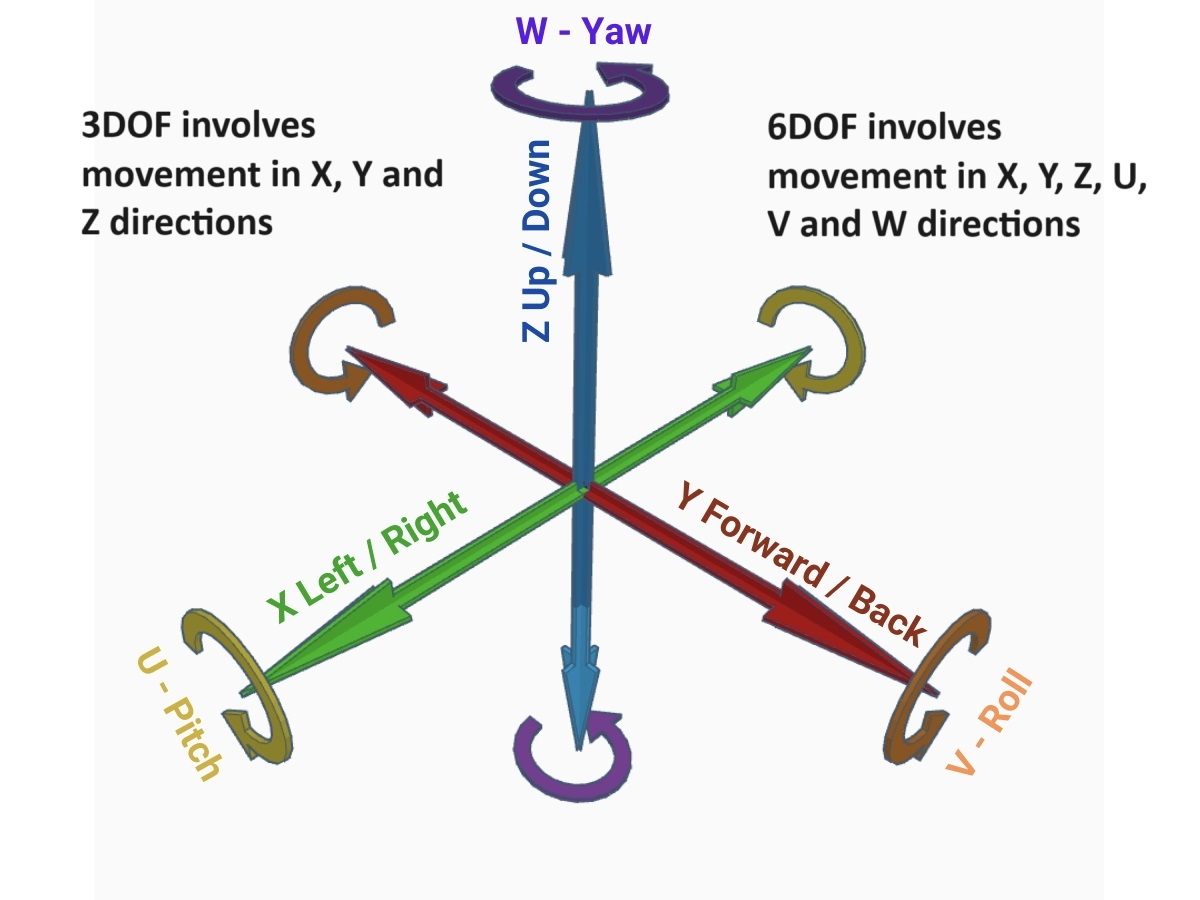Virtual Reality and Degrees of Freedom

In Virtual Reality (VR), degrees of freedom (DOF) describe how rigid bodies move in 3D space. VR has translational (x, y, z) and rotational (pitch, yaw, roll) DOF.
If only translational movements are present, it’s three degrees of freedom (3DOF).
If both translational and rotational movements are involved, it’s six degrees of freedom (6DOF).
Applied features of 3DOF and 6DOF
Let us look at how 3DOF and 6DOF enable various features in specific applications
| Application | 3DOF | 6DOF |
| Mobile VR | Offers simple 3D experiences through looking around & rotation of their head movements. | n.a |
| 360-degree videos | Viewers can turn their heads in any direction to explore the environment, but they cannot move freely within the space | n.a |
| Architectural visualization | Users can look around and get a sense of the scale and design of the structures without the need for full positional tracking. | Users can explore the environment by not only rotating their heads but also physically moving through the virtual space |
| Educational learning | Users mainly learn by observing their surroundings | Allows students to actively engage with the virtual content thereby providing immersive learning experiences |
| Storytelling | Cinematic VR experiences where users can look around to explore the scenes, but they cannot physically move within the environment | Users can move within the virtual space, influencing the storyline and engaging with the narrative in a more immersive way |
| Gaming | Basic game features where users can look around & rotate their heads providing basic experience | Interactive and Narrative experiences where users can move freely within the virtual environment, enhancing the sense of presence and interaction |
| Industrial Design & Prototyping | Users can look into the 3D view of the design and prototype but are limited in their interactions | Users can not only view 3D design but manipulate and interact with virtual prototypes. This enables a more intuitive and immersive design review process. |
| Virtual Meetings & Collaborations | Enable participants to look around and interact with content during virtual meetings | Participants can not only see each other’s avatars but also move around and interact with 3D models or presentations in a more natural way. |
| Training & Simulations | Low Fidelity training where full-body movement isn’t critical, 3-DOF systems can be used for training simulations. | High Fidelity where users to not only look around but also move within the virtual space, providing a more realistic and effective training experience. |

